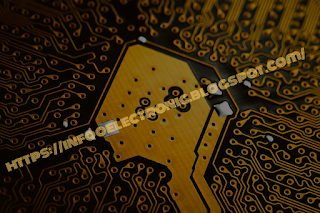Semiconductor device:
Introduction:
A semiconductor device is an electronic component that operates primarily on the electronic properties of silicon, germanium, gallium arsenide, as well as organic semiconductors. Its conductivity falls in the range of insulators and conductors. Vacuum tubes have mostly been supplanted by semiconductor devices. Instead of conducting electricity as free electrons through a vacuum (usually released by thermionic emission) or as free electrons and ions via an ionized gas, they do so in the solid state.
Both discrete single semiconductor devices and integrated circuit (IC) chips—which contain two or more devices that can range in number from the hundreds to the billions—are produced in the semiconductor industry (also called a substrate).
Semiconductor materials are advantageous because doping, or the intentional addition of impurities, can quickly change their behavior. Semiconductors make great sensors because they have the ability to control conductivity through the application of an electric or magnetic field, exposure to light or heat, or mechanical deformation of a doped monocrystalline silicon grid. Charge carriers, also referred to as mobile or "free" electrons and electron holes, are responsible for current conduction in semiconductors. The amount of free electrons or holes within a semiconductor is significantly increased by doping it with a little amount of an atomic impurity, such as boron or phosphorus.A doped semiconductor is referred to as a p-type semiconductor (p for positive electric charge) when it has an excess of holes, and an n-type semiconductor when it has an excess of free electrons (n for negative electric charge). Most mobile charge providers use a negative charge. The placement and concentration of p- and n-type dopants are precisely controlled during semiconductor fabrication. P-n junctions are created when n- and p-type semiconductors are connected.
The metal-oxide semiconductor field-effect transistor, also known as the MOS transistor, is the most popular semiconductor device in use today. As of 2013, every day billions of MOS transistors are produced. Since 1978, the number of semiconductor devices produced annually has increased by 9.1% on average. In 2018, shipments are expected to reach 1 trillion for the first time, suggesting that well over 7 trillion semiconductor devices have been produced overall.
Common semiconductor devices are listed as:
n DIAC
n Diode (rectifier diode)
n Gunn diode
n IMPATT diode
n Laser diode
n Light-emitting diode (LED)
n Photocell
n Phototransistor
n PIN diode
n Schottky diode
n Solar cell
n Transient-voltage-suppression diode
n Tunnel diode
n VCSEL
n Zener diode
n Zen diode
n Bipolar transistor
n Darlington transistor
n Field-effect transistor
n Insulated-gate bipolar transistor (IGBT)
n Silicon-controlled rectifier
n Thyristor
n TRIAC
n Unijunction transistor
n Hall effect detector (magnetic field sensor)
n Photocoupler (Optocoupler)
Applications for Semiconductor Devices:
The building blocks of logic gates, which are essential in the creation of digital circuits, can be any form of transistor. Transistors serve as on-off switches in digital circuits like microprocessors; in the case of a MOSFET, for example, the voltage provided to the gate decides whether the switch is on or off.
Instead of functioning as on-off switches, analog circuit transistors respond to a continuous range of inputs with a continuous range of outputs. Amplifiers and oscillators are examples of typical analog circuits.
Mixed-signal circuits are those that interface or translate between digital and analog circuitry.
Identifiers for components:
Devices made of semiconductors frequently have manufacturer-specific component numbers. However, some devices adhere to the type code standards that have been attempted to be created. There are three standards, for instance, for discrete devices: Pro Electron in Europe, JEDEC JESD370B in the United States, and Japanese Industrial Standards (JIS).
Discrete or integrated circuits designed for high current or high voltage applications are known as power semiconductor devices. Power integrated circuits, sometimes known as "smart" power devices, combine power semiconductor technology with IC technology. Power semiconductor production is a niche industry with several manufacturers.



No comments:
Post a Comment